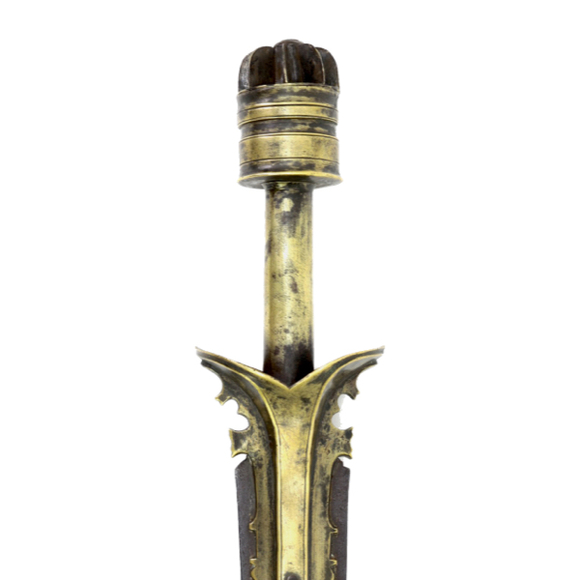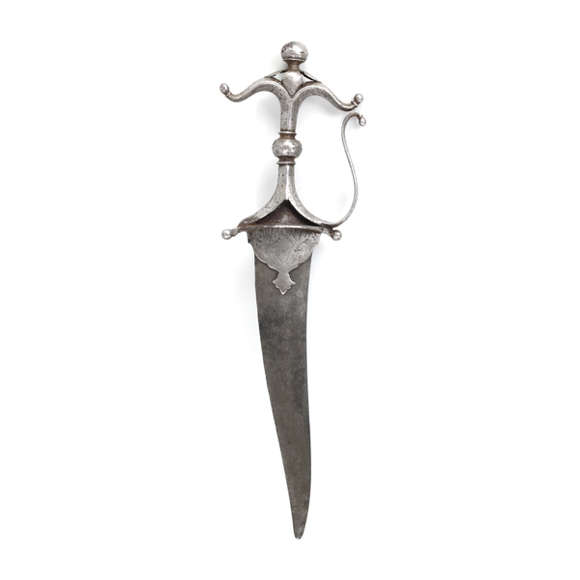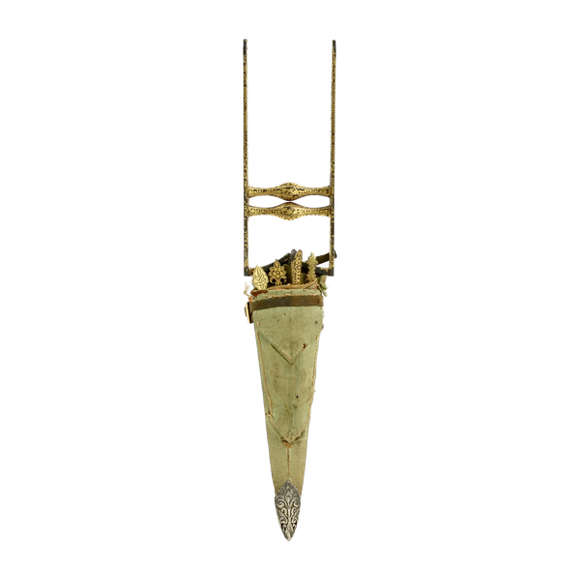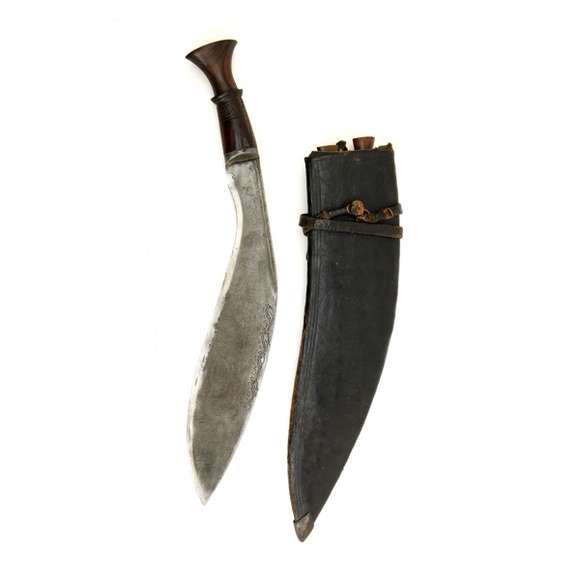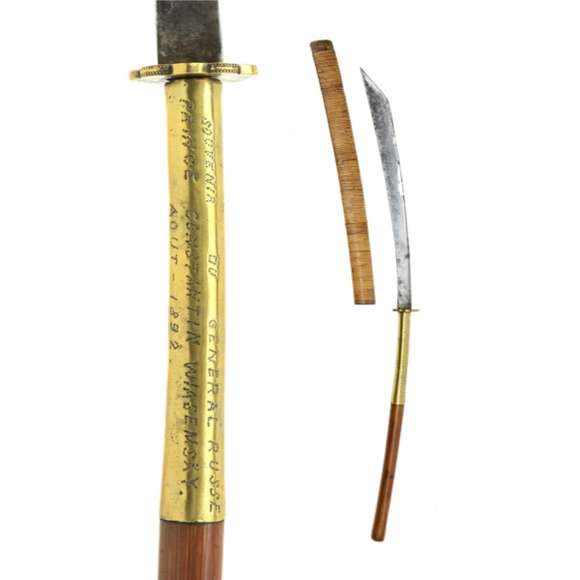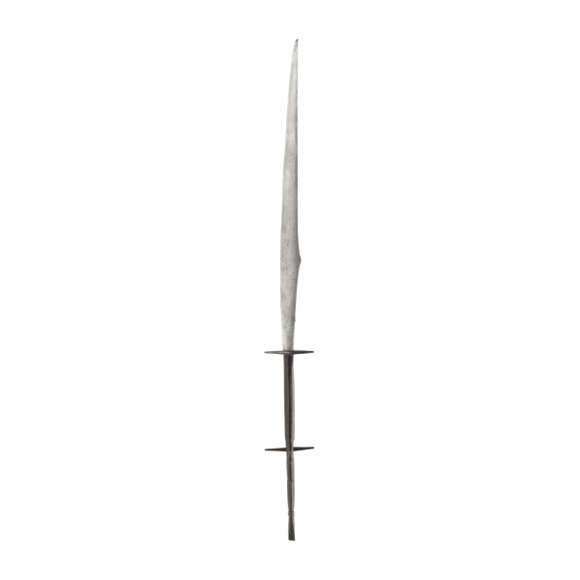An early fighting piece with strong reinforcing langet and broad, cobra shaped tip.

90 cm / 35.4 inch
76.5 cm / 30.1 inch
forte 4 mm
middle 4 mm
near tip 1.5 mm
forte 35.5 mm
middle 37 mm
near tip 43 mm
858 grams
13 cm from guard
India
Wootz steel, iron, gold, cotton.
Scabbard: wood and velvet.
Early 18th century
Richard R. Wagner Jr. collection
This sword has been sold in 2017.
Introduction
The khanda represents one of the oldest forms of Indian swords, it's present form is first seen on temple reliefs in Orissa dating back as early as the 2nd century A.D. Its name derives off the Sanskrit khaḍga meaning "breaker, divider, cutter, destroyer". Always strongly associated with Orissa, the sword did become popular all over India, from the Rajputs and Sikhs in the north to the Marathas of the Deccan and the Nairs in the south. In some of these cultures it was an element of worship, symbolizing wisdom cutting through ignorance. As such it also features widely in religious art, not only in India but through the Himalayas, China, even into Japan.
On a practical level the khanda is a straight cutting sword, (partially) double edged, with a widening blade and an obtuse tip. Most fighting examples have considerable weight in their tip for powerful cuts. The blades often have reinforcements in the form of a long langet at the base of the blade or reinforcing strips on either side of the blade. In the 1600's the characteristic Hindu basket hilt was developed for increased hand protection.
Notes to introduction
See Rawson, P.S.: The Indian Sword, Herbert Jenkings, London, 1968. Pages 6-8. and Stone: A Glossary of the Construction, Decoration and Use of Arms and armor, 1934. Reprint by Dover, 1999, p. 352.
This example
Presented here is a beautiful khanda with an exceptionally fine hilt. The partially double-edged blade starts narrow at the base and gradually widens near the tip where it forms a triangular point with concave edges, a style associated with Northern India. The blade is reinforced by metal strips on either side, riveted to the blade. The strip at the front of the blade is short whereas the strip on the back runs most of the length of the blade. The strips are pierced and serrated, and with remains of golden damascened decoration. There is a crack in the long strip at the back. The blade is forged from unusually fine-grained wootz steel.

Left the fine-grained wootz on this khanda, right the more conventional wootz on a north Indian knife
Hilt
The hilt of the typical Hindu basket hilt type consisting of two connected ovals making up the guard, and a wide knucklebow that connects to a disc pommel. At the end of the disc-pommel is a short, curved spike with a flower bud shaped finial. On top of the guard is a triangular structure with langets pointing towards the blade's tip and protrusions to the sides with stylized flower bud finials, crafted from the metal in great detail. All borders of the hilt consist of beaded work typical of southern work, further accentuated with pierced work. All outside faces of the hilt are damascened with flower motifs in gold, the work is incredibly fine. The gold is applied with great precision, leaving no crosshatching outside the motifs as is common on later Indian work of this kind.
The sword is in excellent condition throughout, with most of the gold remaining. It comes in a snugly fitting storage scabbard covered with antique velvet, made by Philip Tom.
Conclusion
A beautiful khanda with a very fine hilt with beaded rims, pierced, chiseled and golden damascened, all executed with great care. It comes with a long blade of very fine wootz. Very good condition throughout.
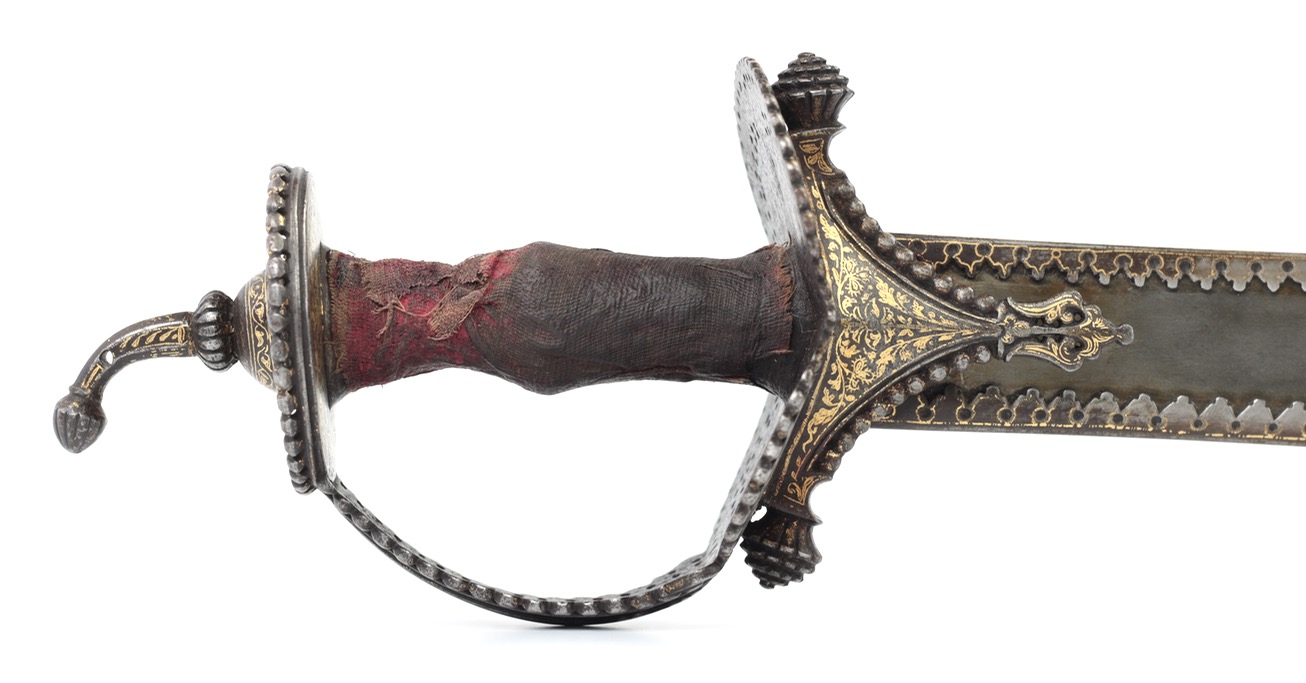
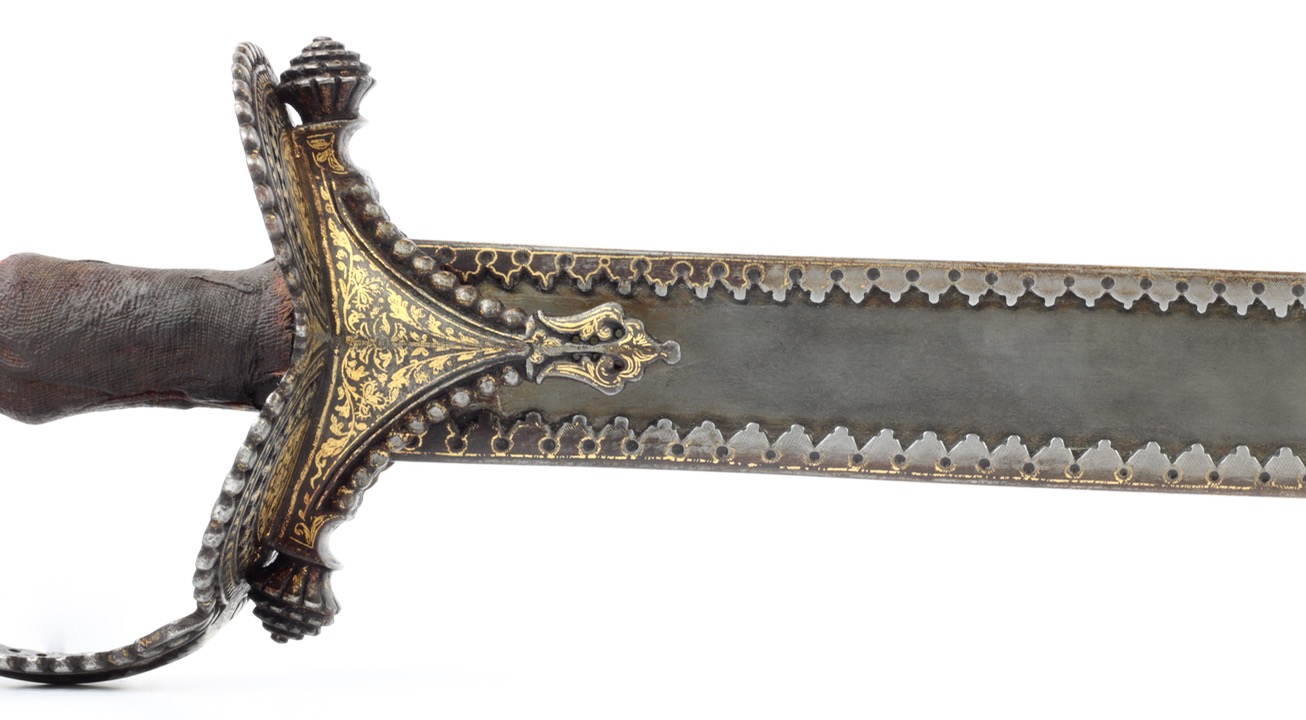
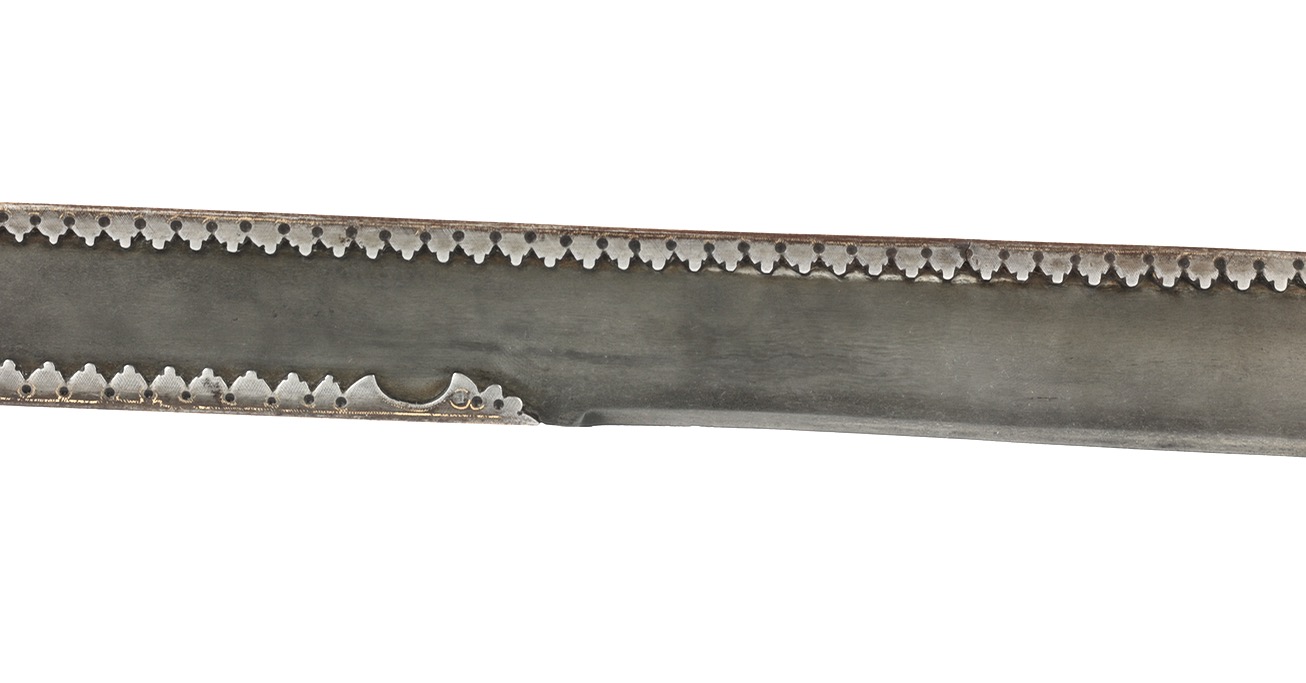
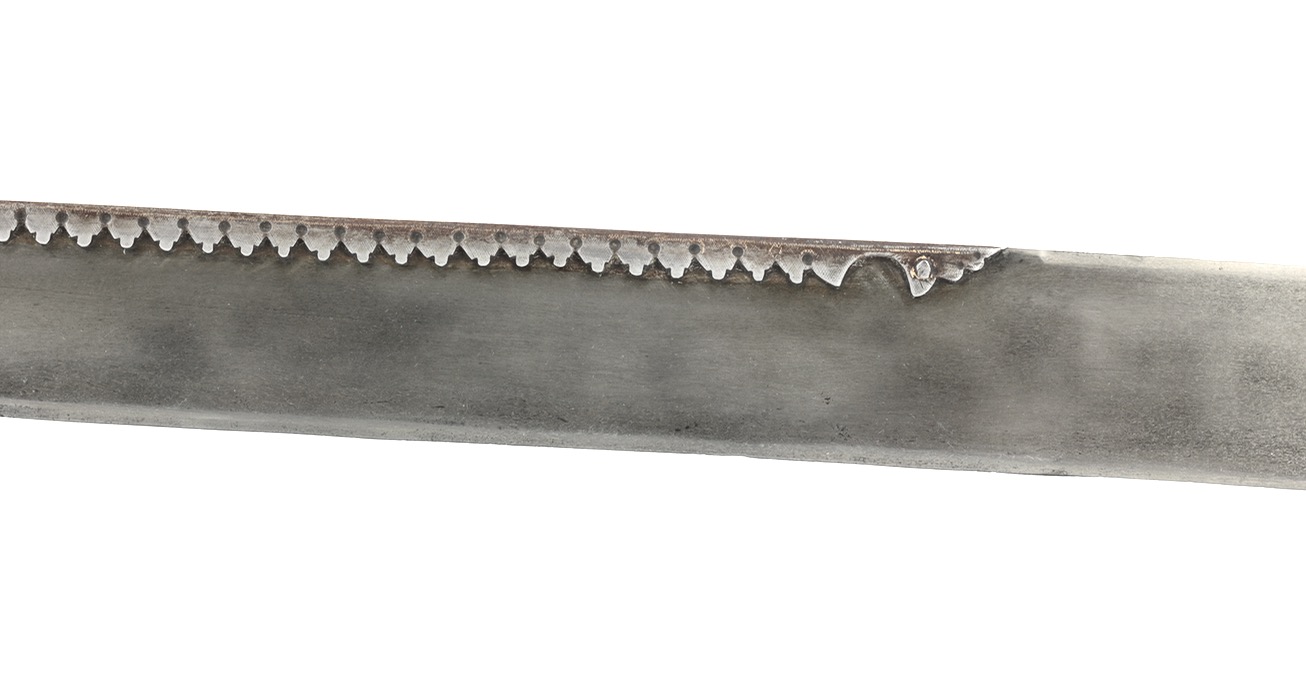
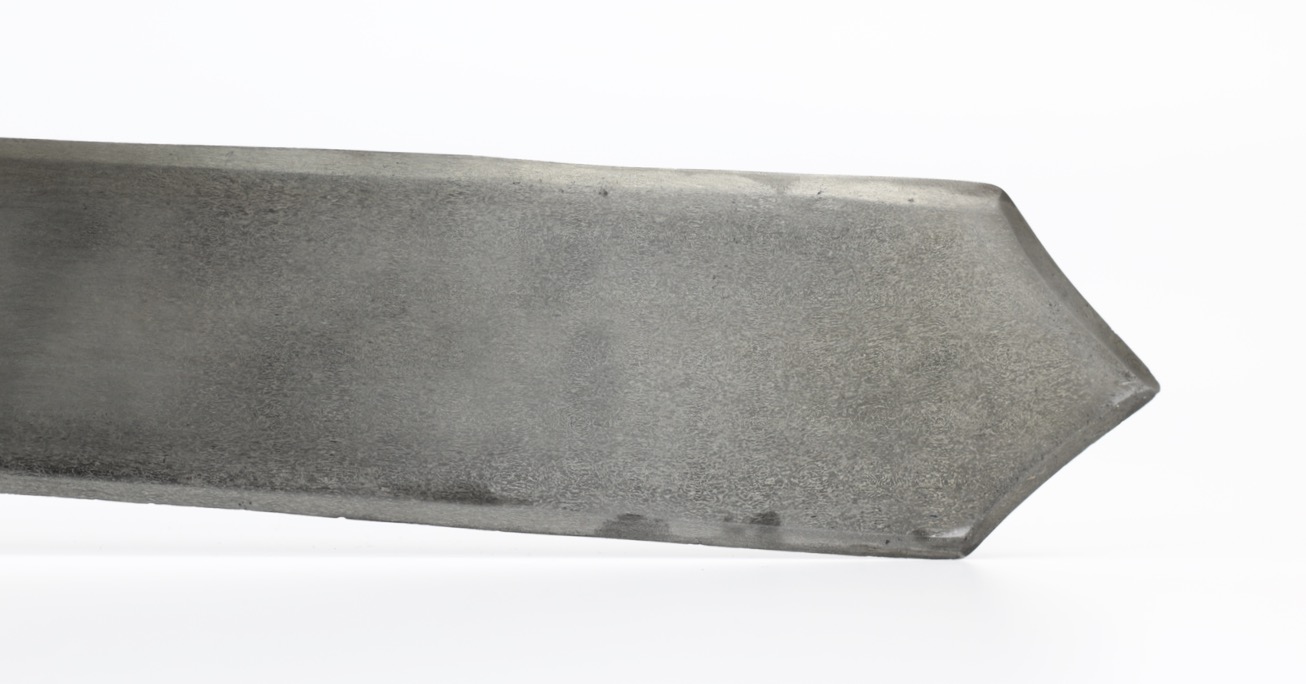

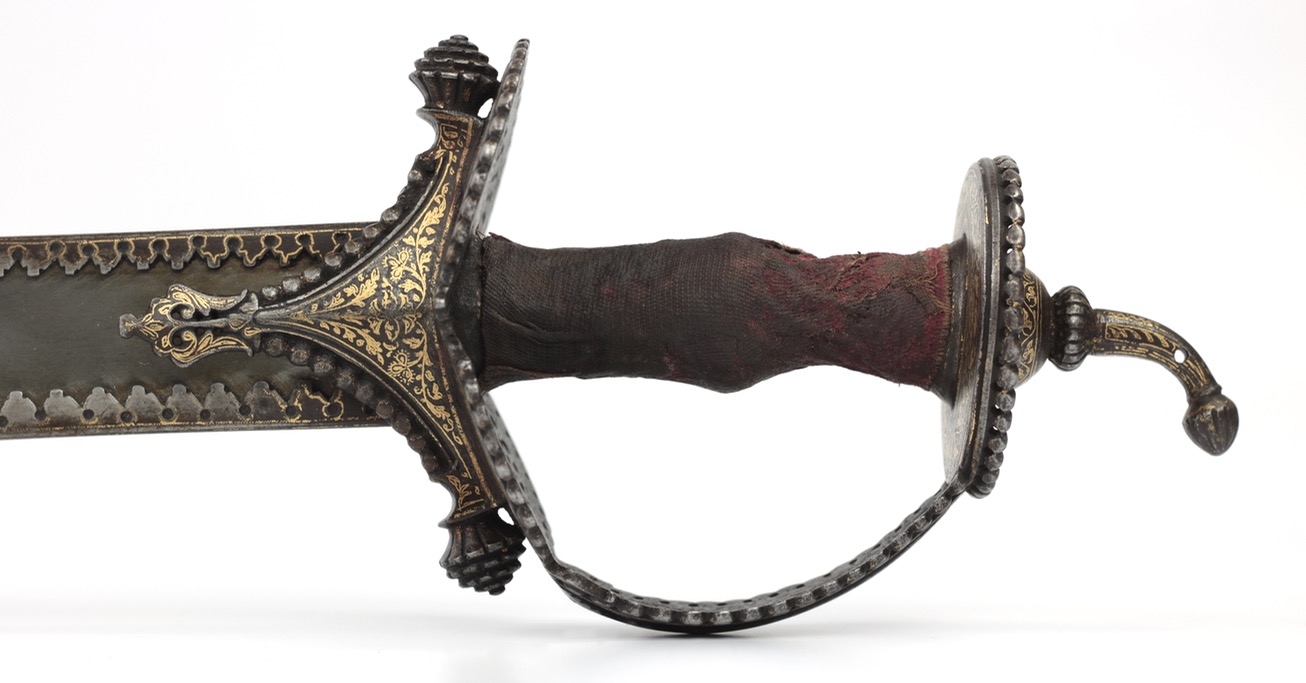
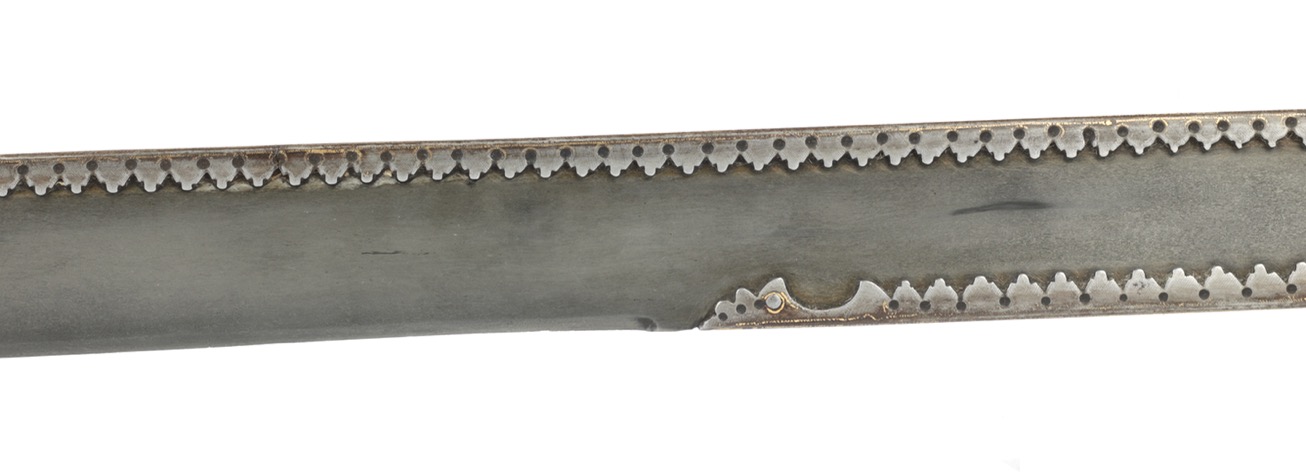
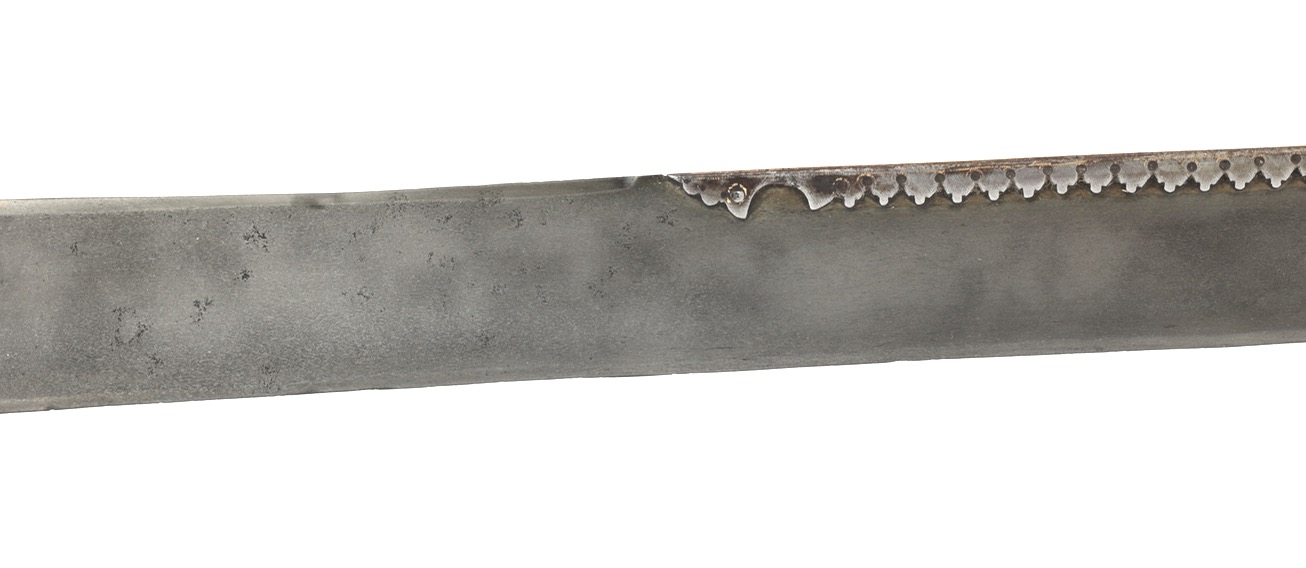
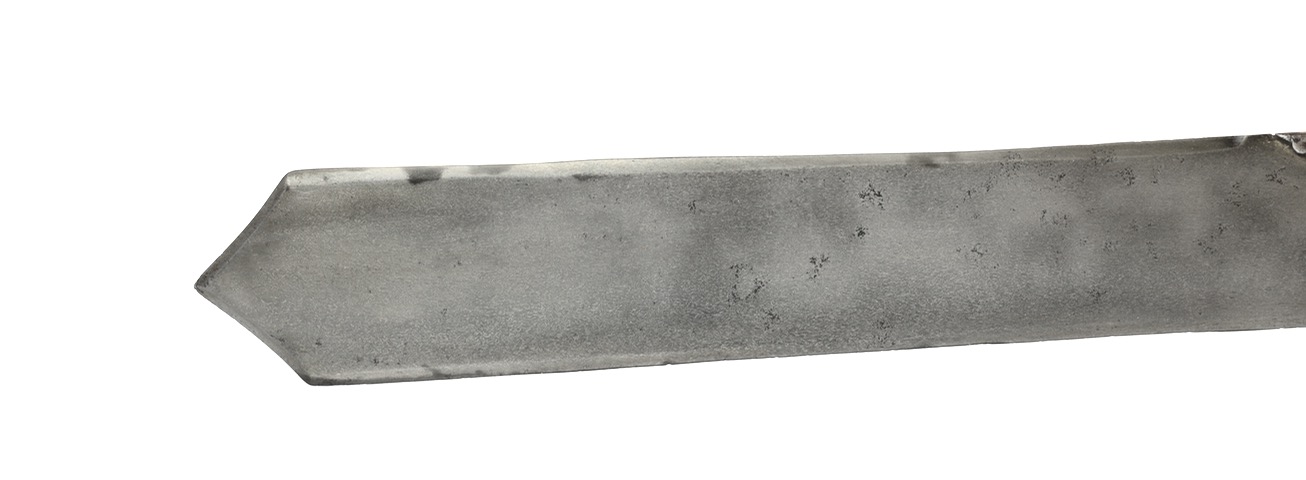
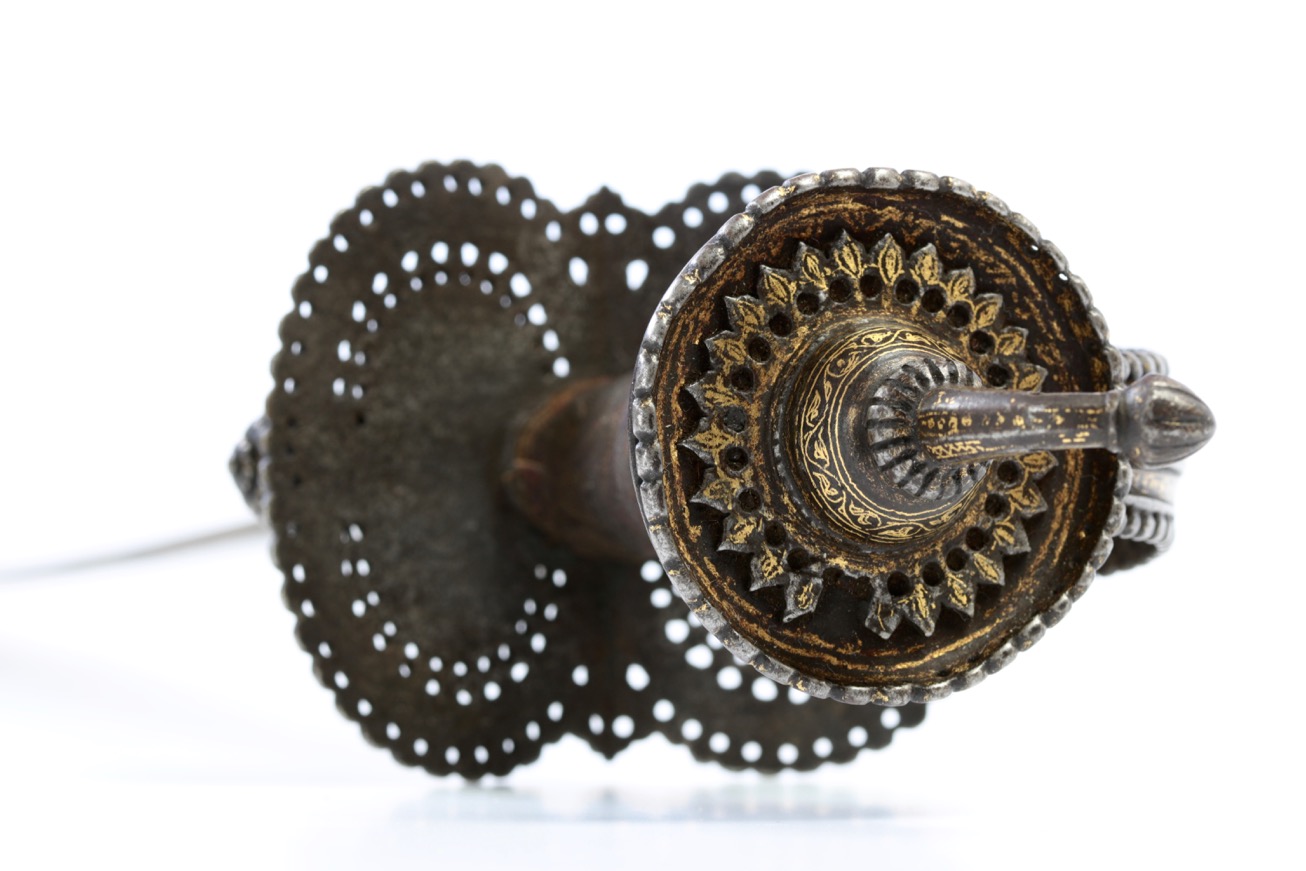
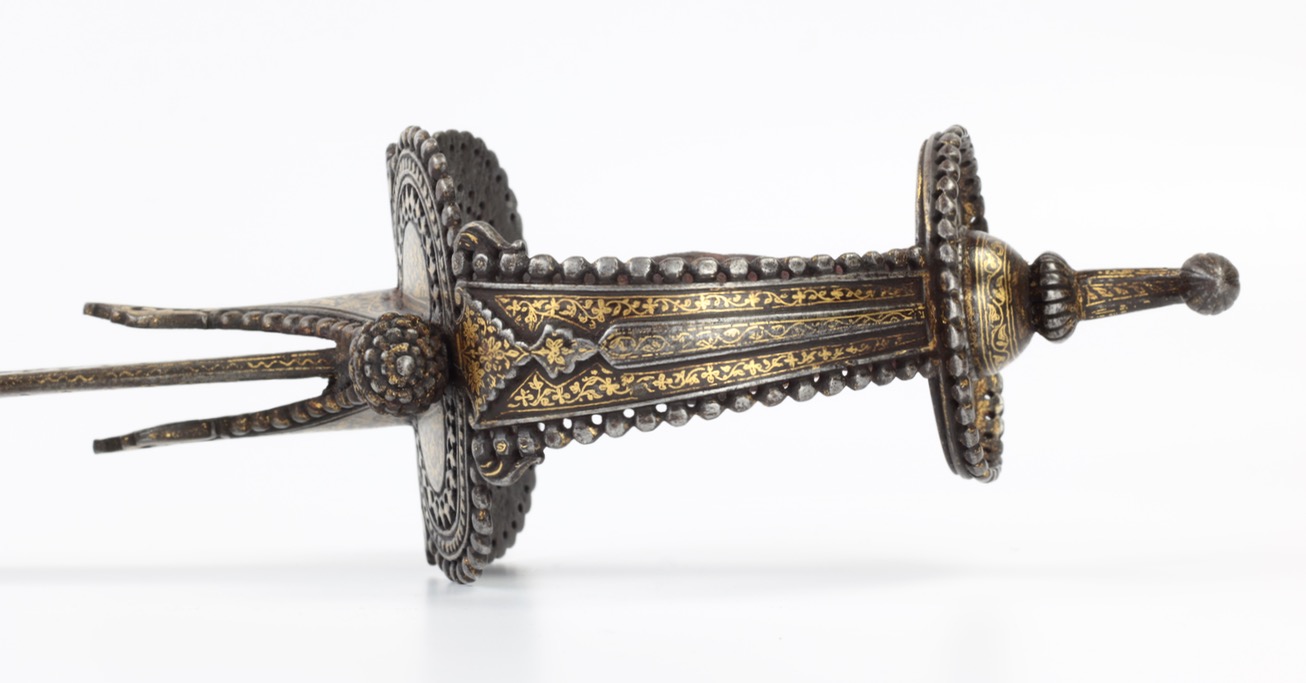
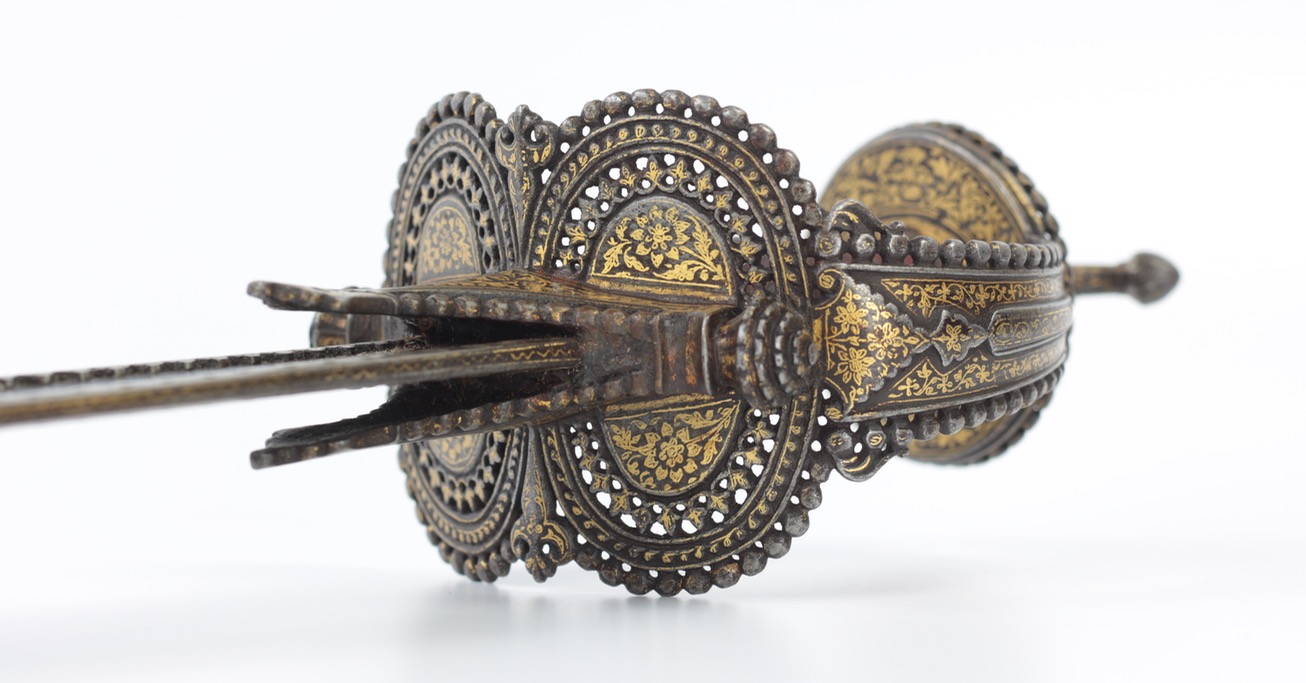
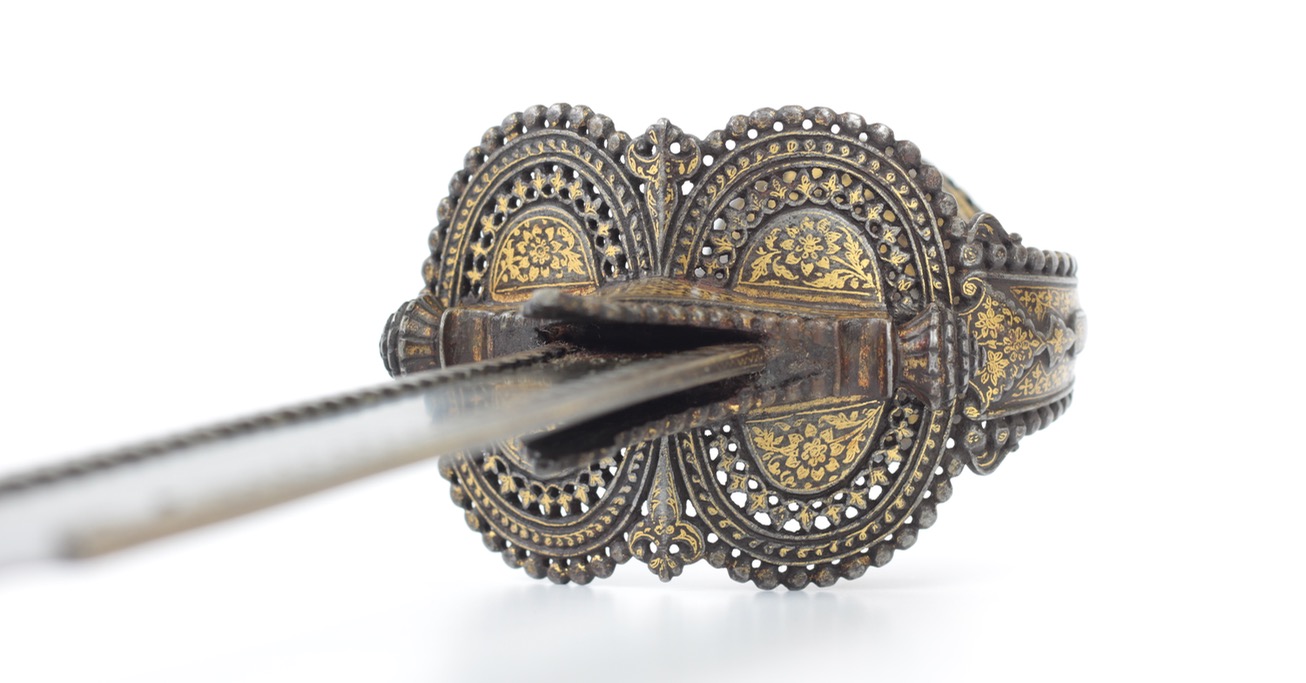
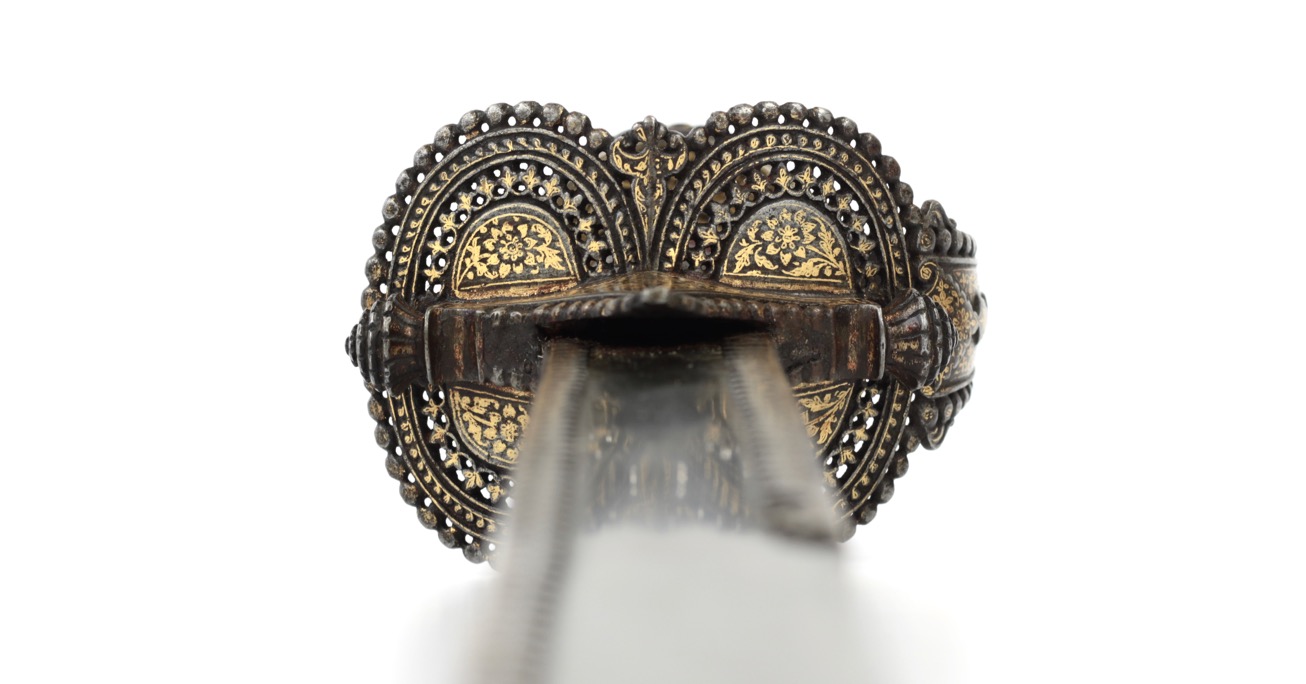
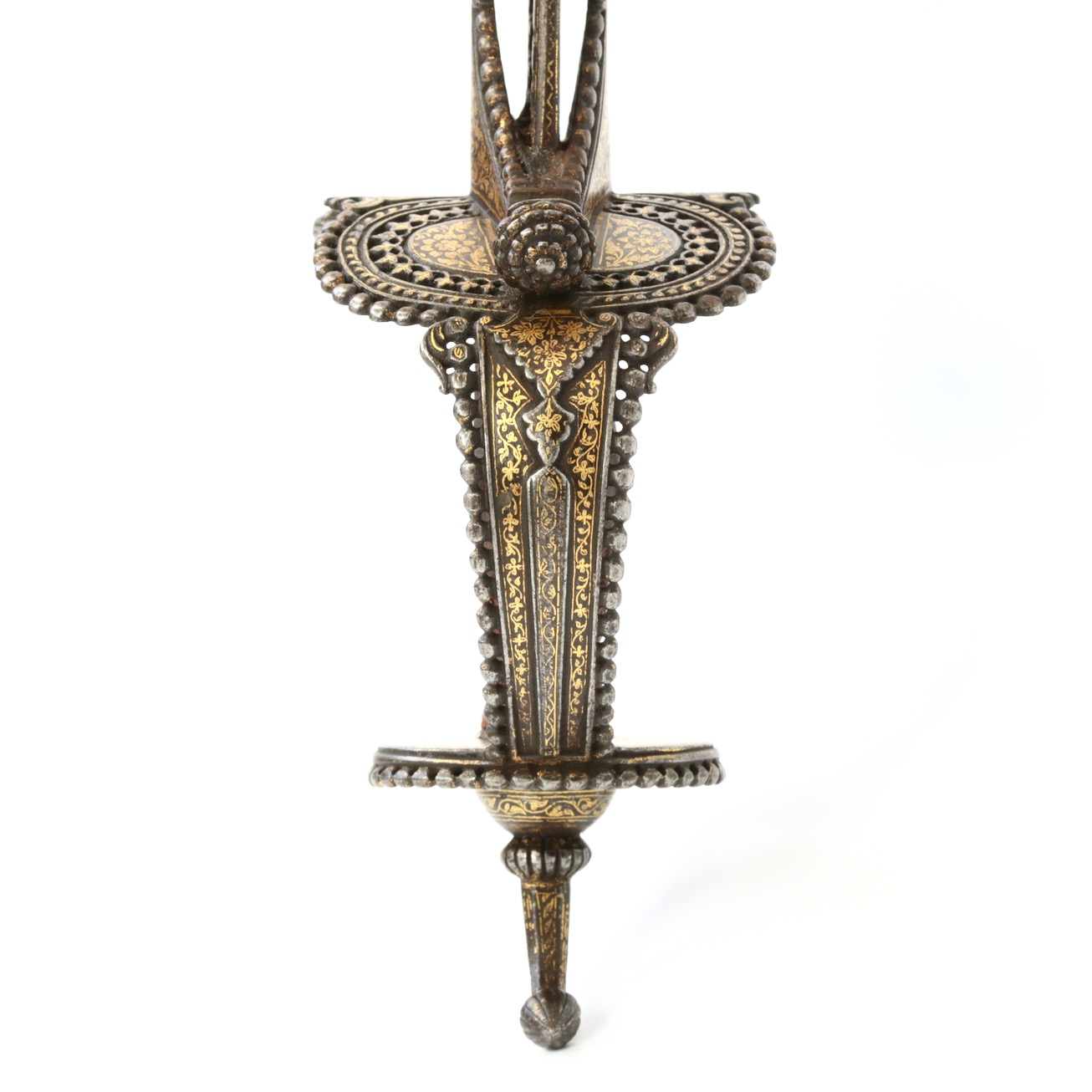
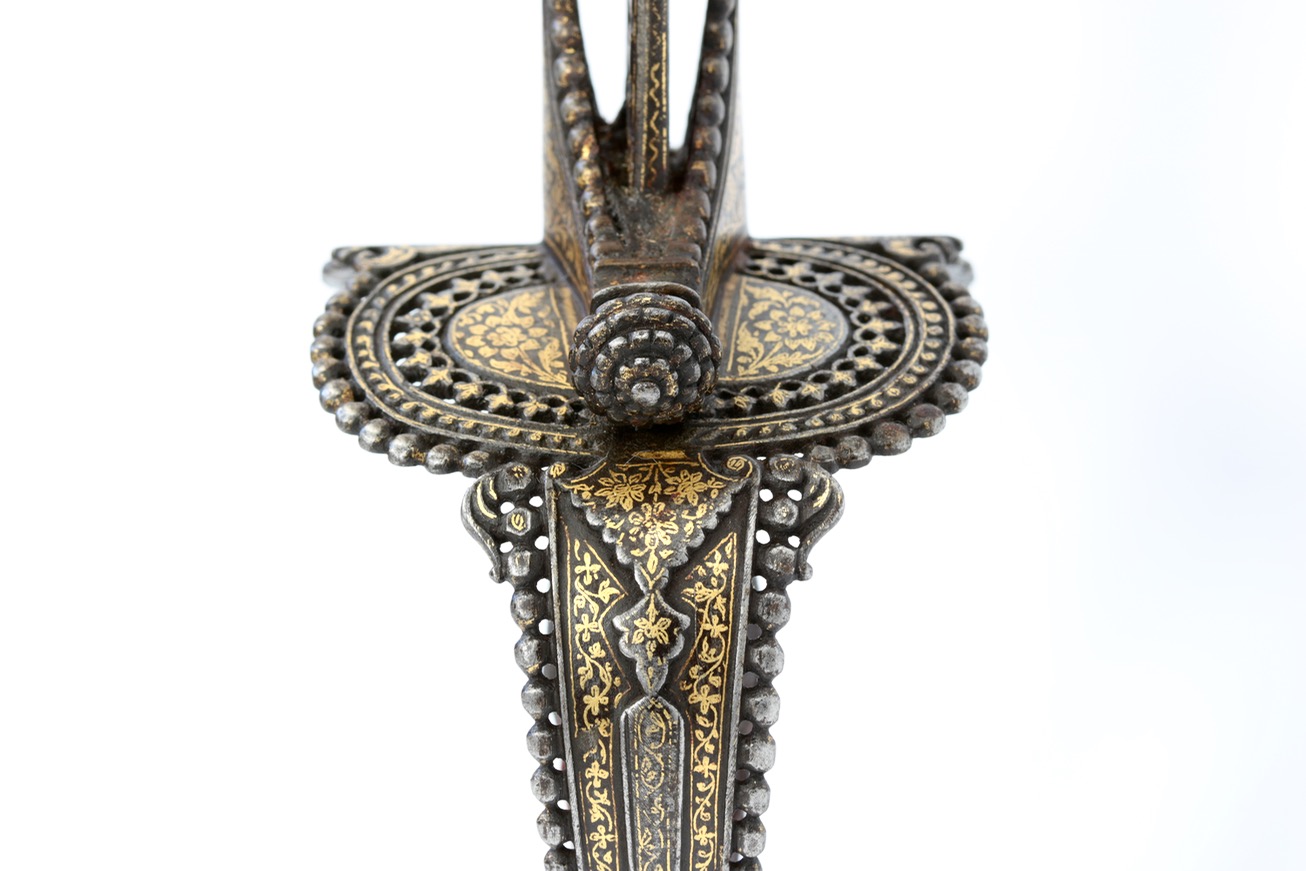
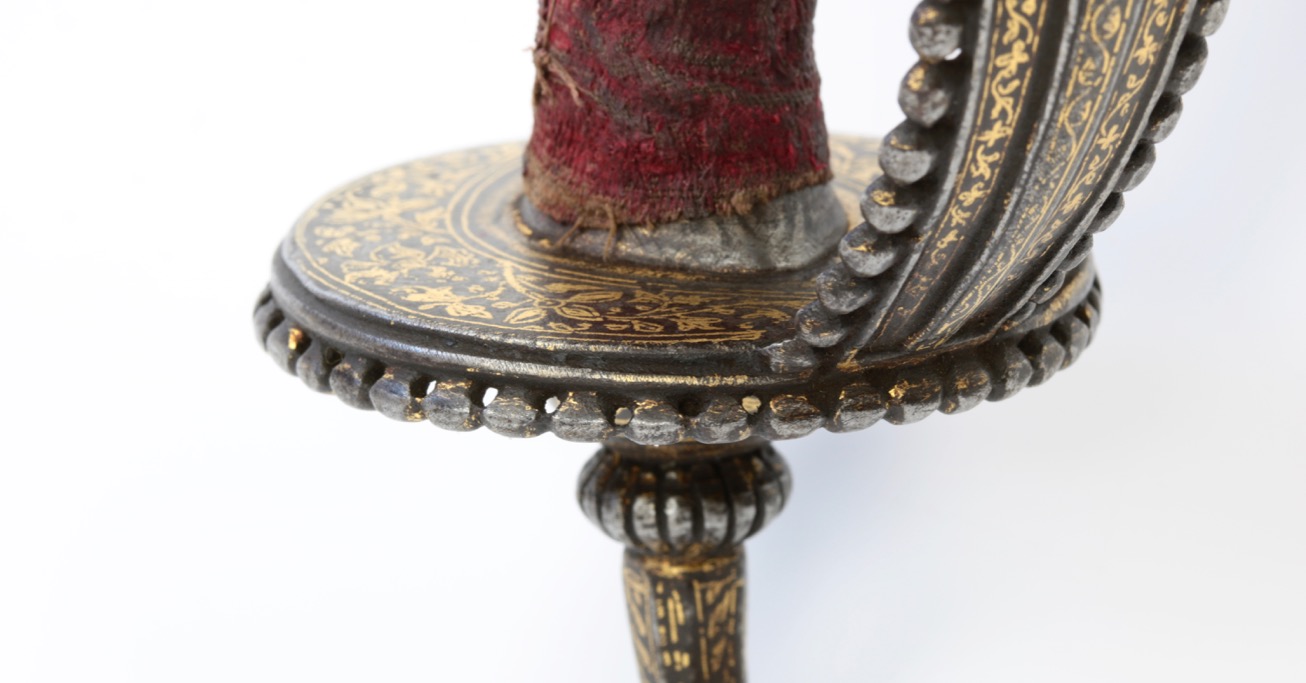
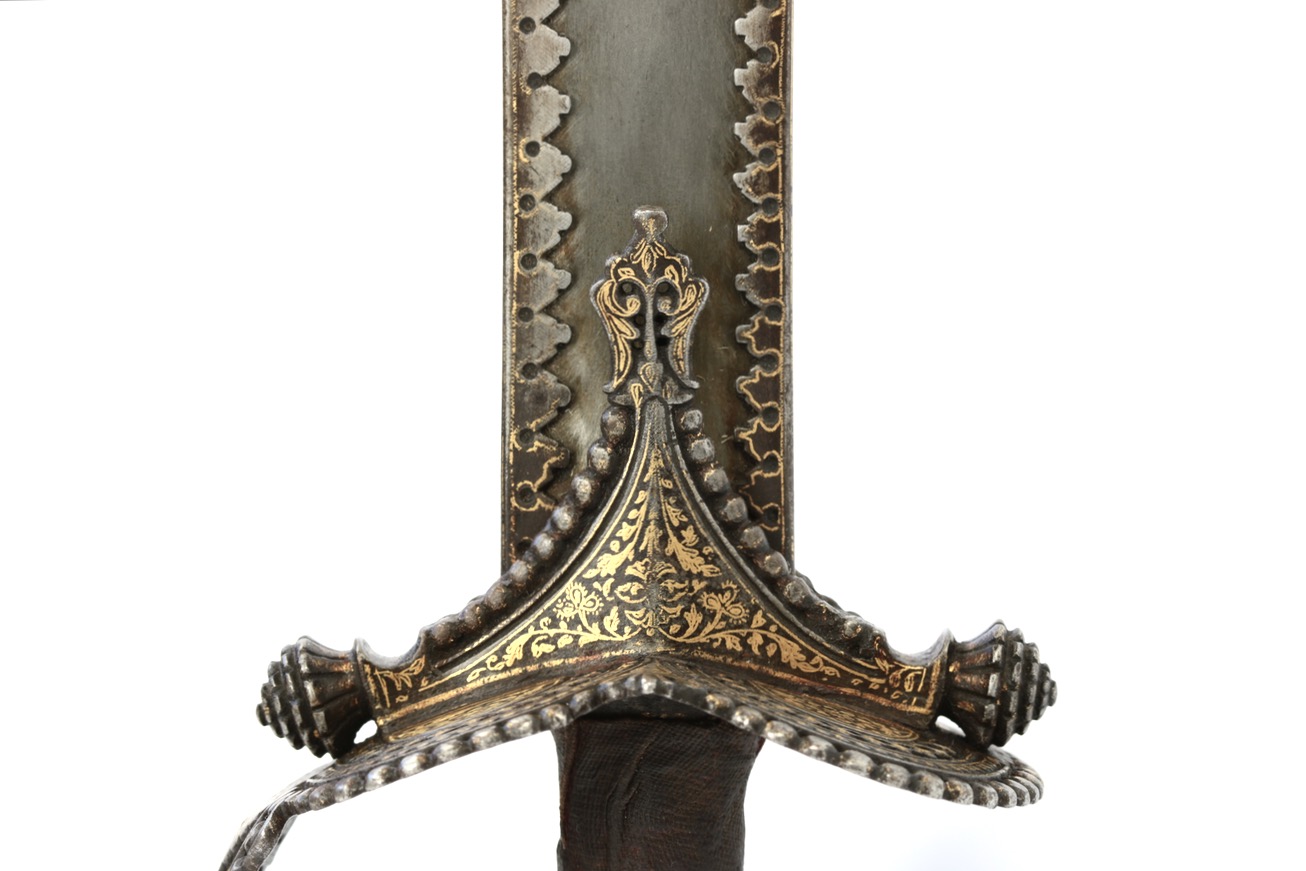
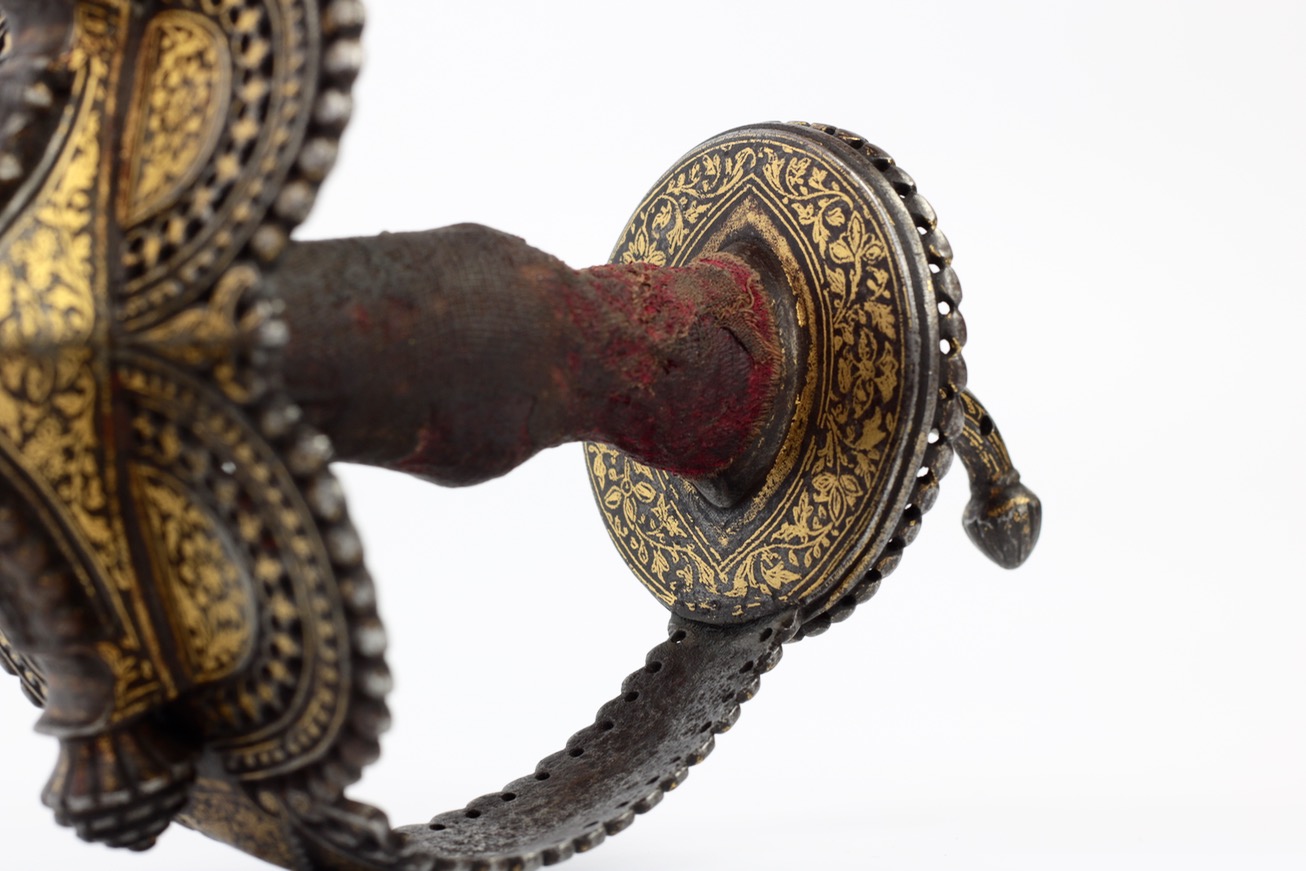
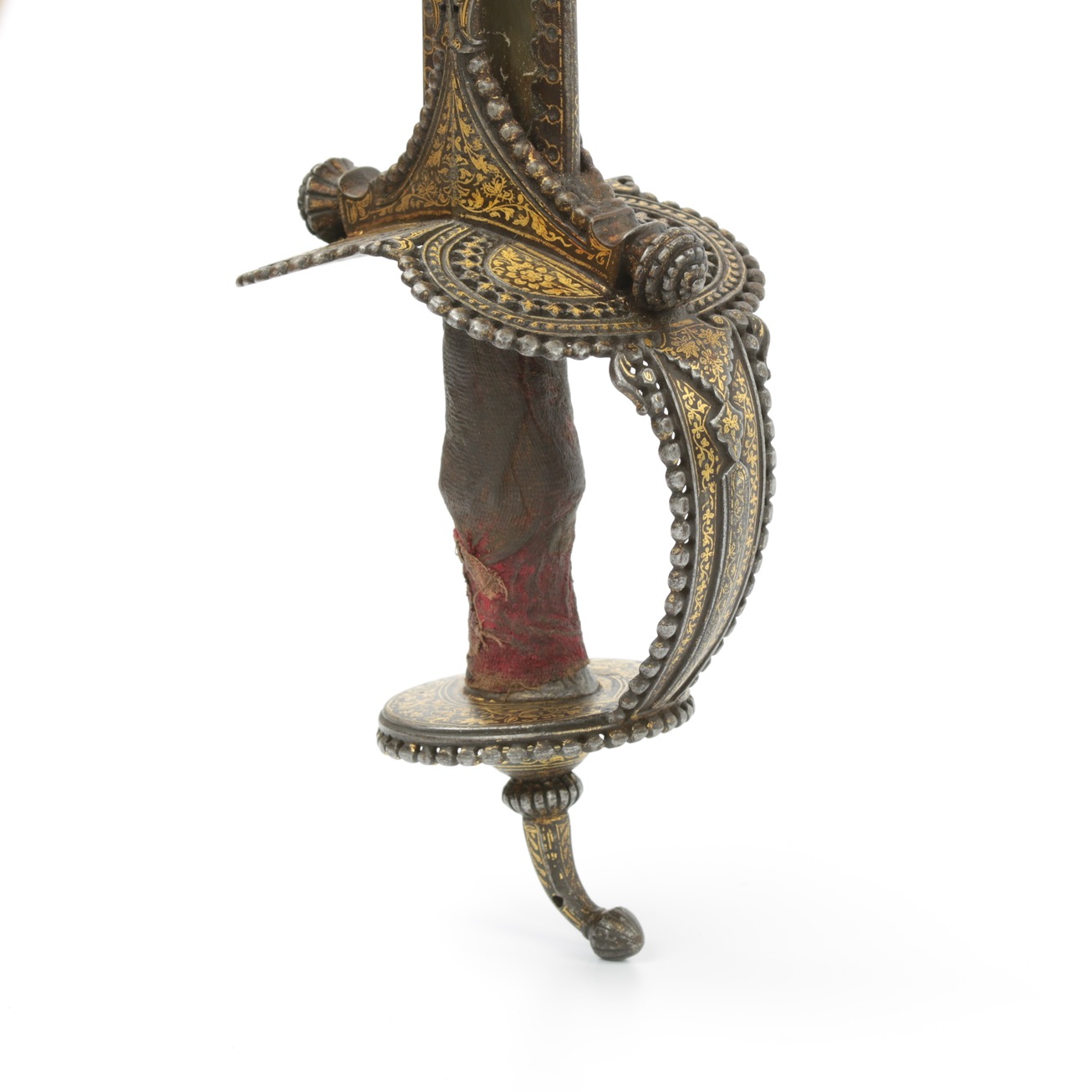
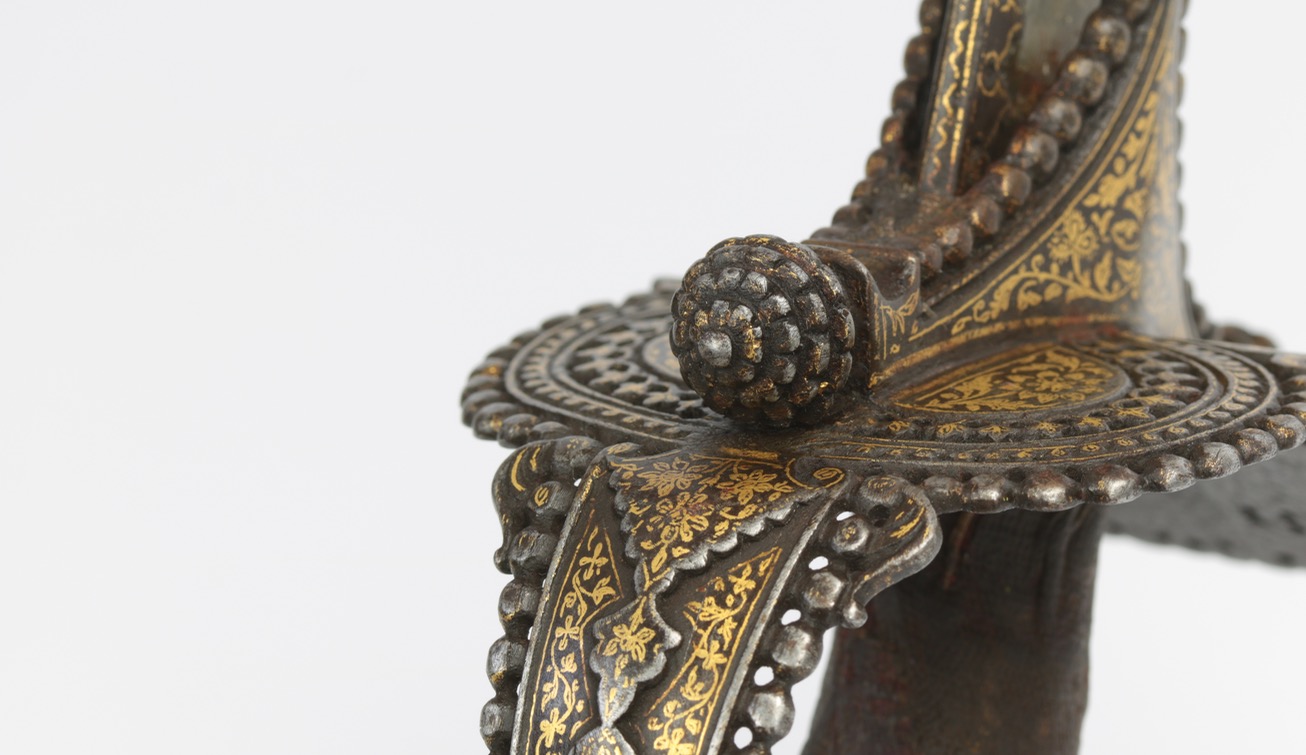
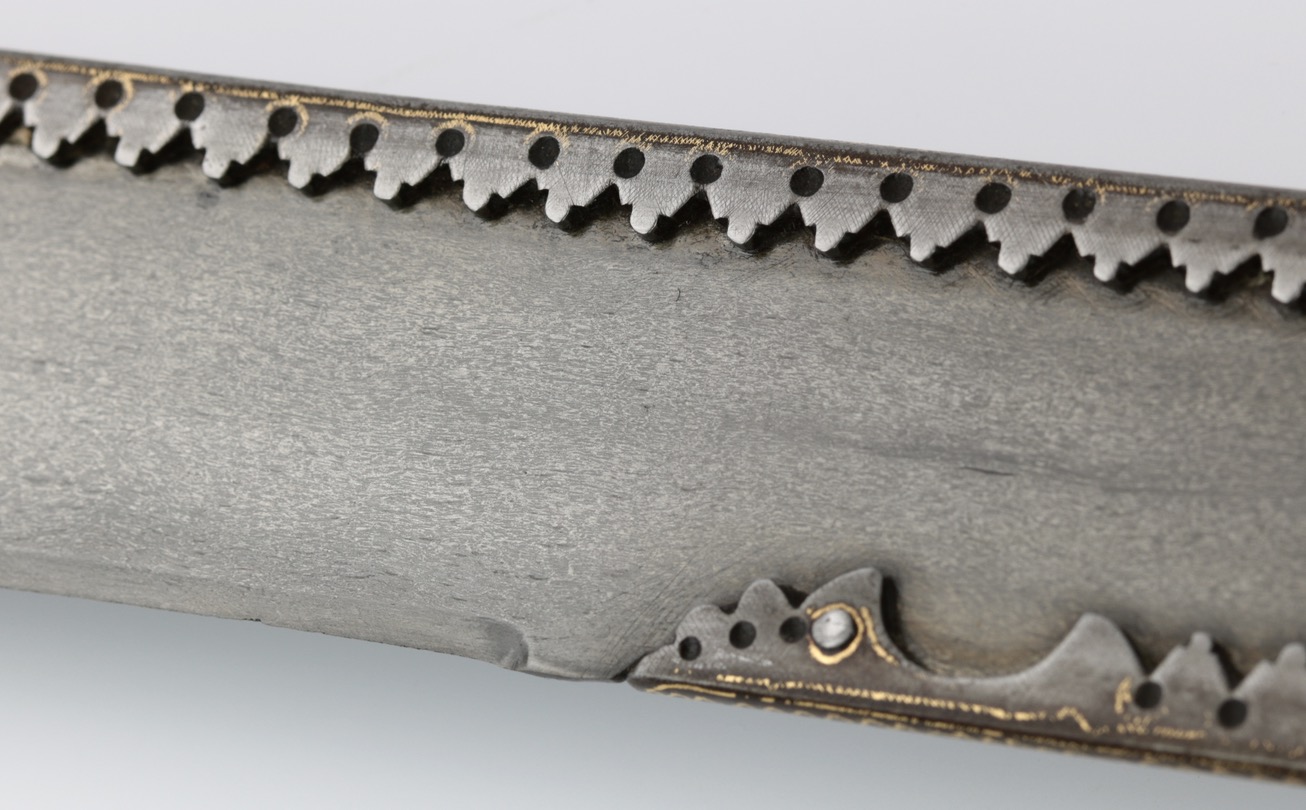
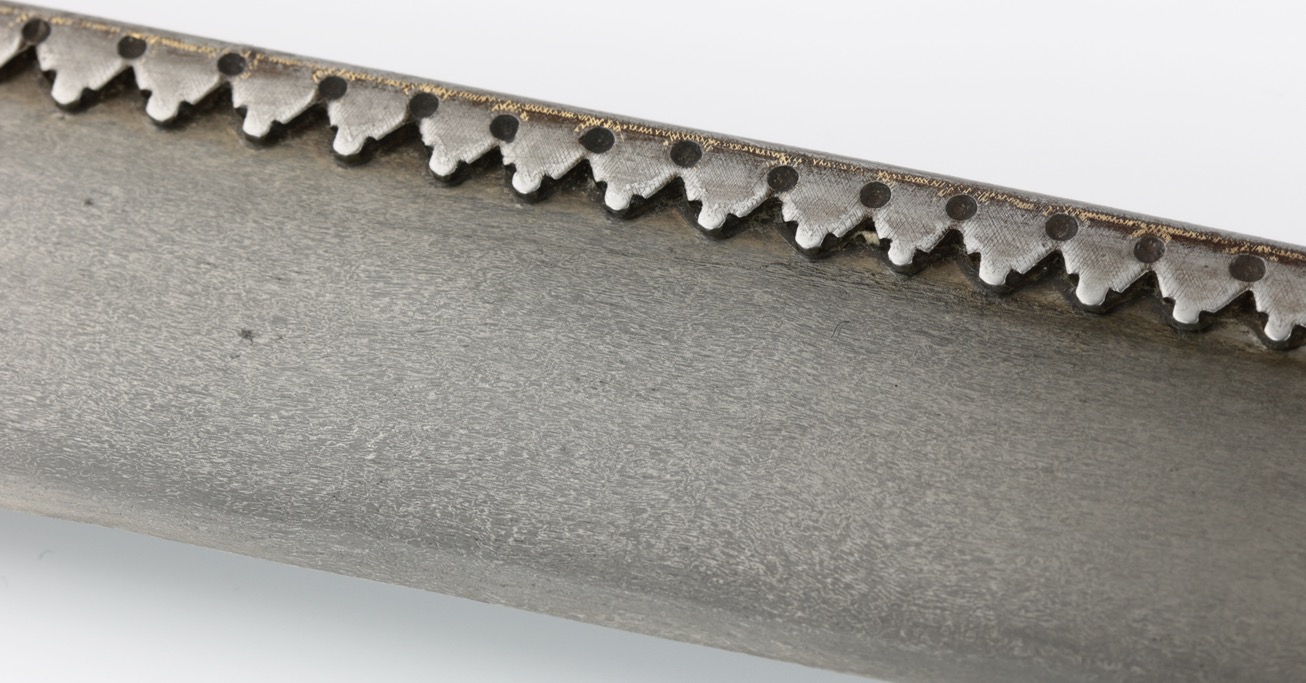
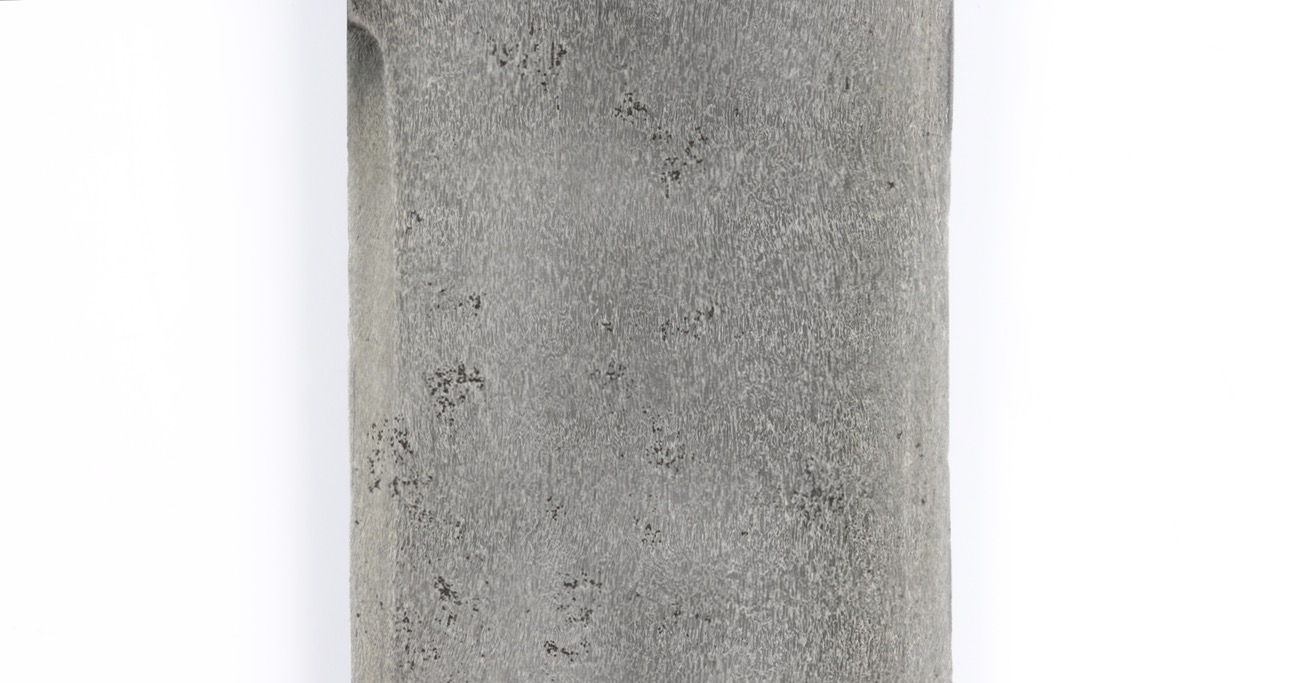

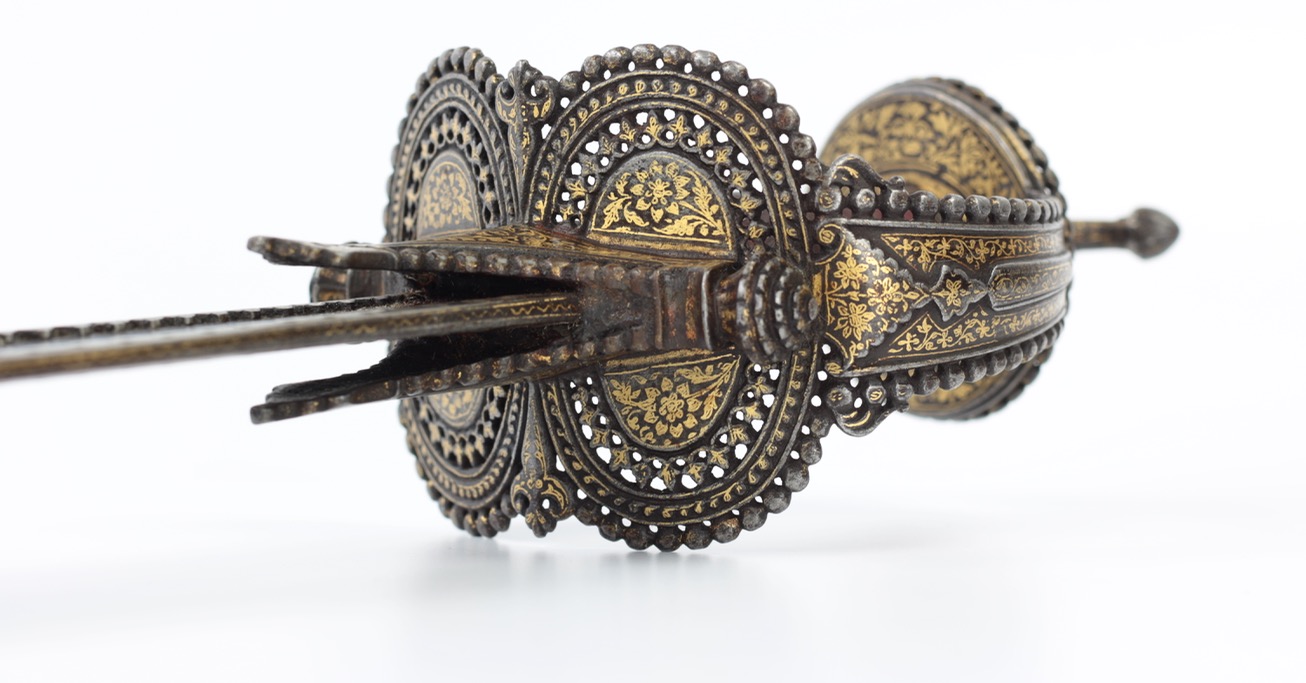
Somewhat worn but once very high-quality, with great sculptural qualities and remains of silver "true…
Collected by a Russian prince from the hill peoples of central Vietnam in 1892.
These mysterious weapons were already obsolete when the first ethnographers encountered them.

